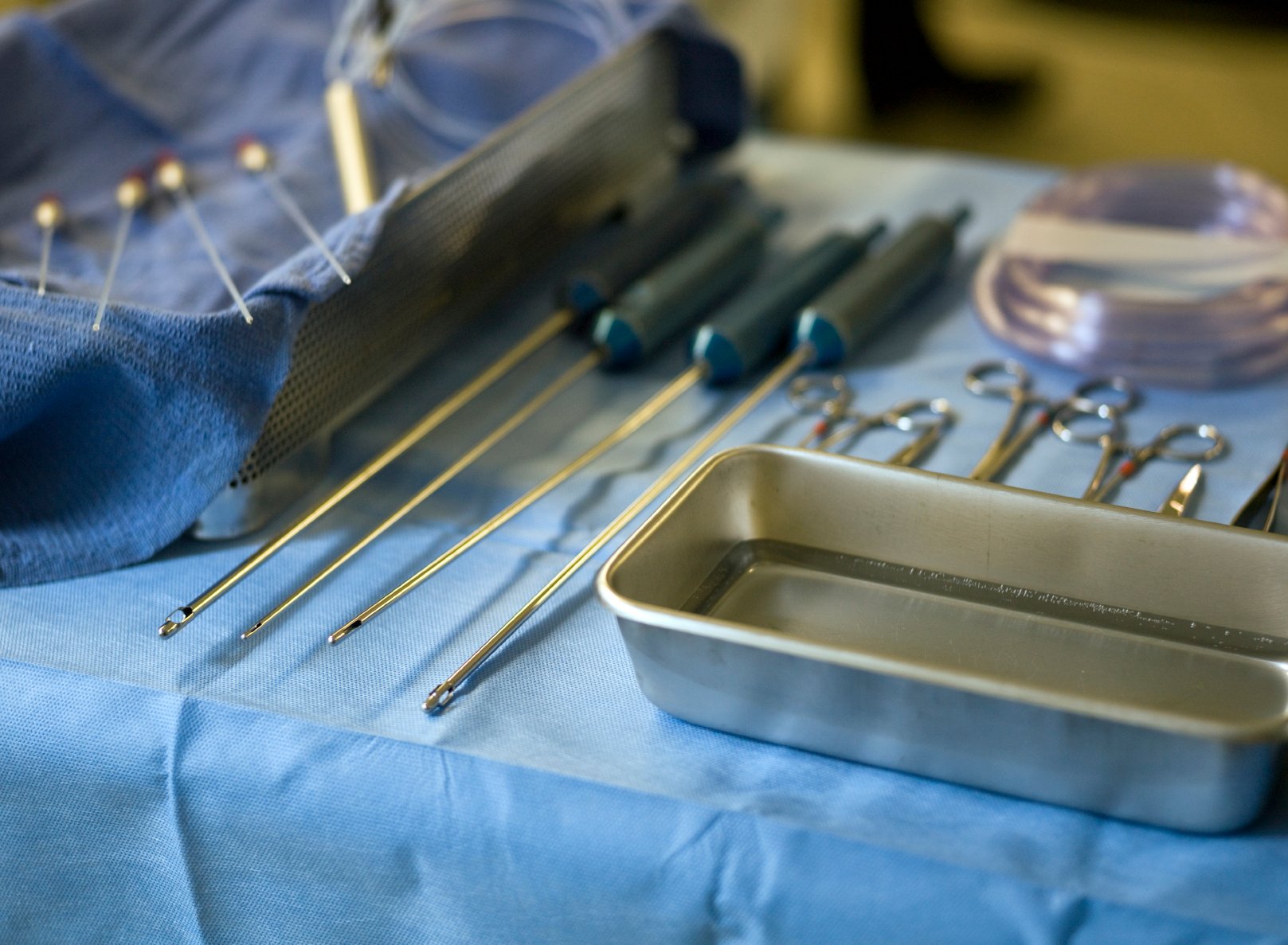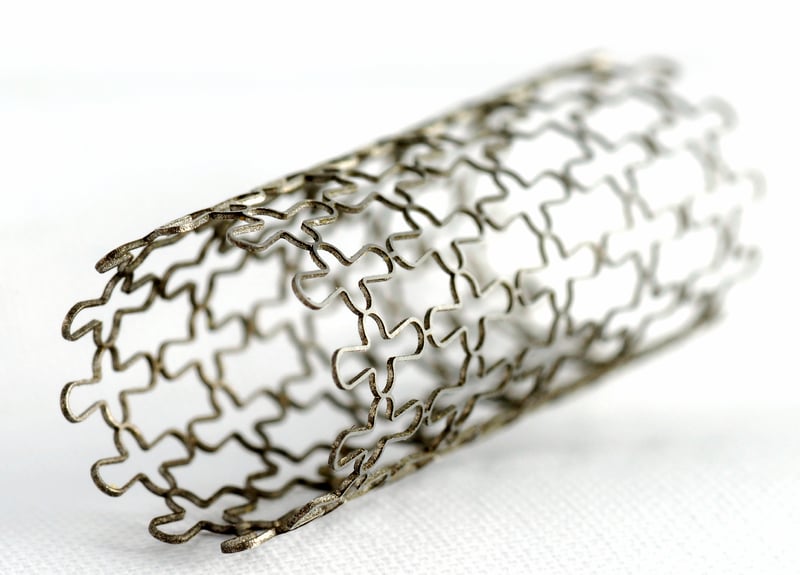 The tools and equipment used in the medical device manufacturing process require absolute precision.
The tools and equipment used in the medical device manufacturing process require absolute precision.
Special attention to the intricacies of medical devices is critical as the end product must be pristine and uncompromised. Like the end product, the equipment used in the manufacturing process must be maintained to ensure that the products are delivered without flaws or excess material and ready for use.
Medical device manufacturers face many challenges when it comes to cleaning and maintaining equipment. During the production of high tolerance medical device parts, residue build-ups in tiny mold cavities and on expensive tooling, which impacts the quality of the end product. This build-up results in defective parts, which elevates scrap rates, and could eventually clog the mold cavities and impede the performance of the tooling. The residue can also prevent the imprinting of small, yet critical details, such as measuring scales on syringes.
Because of the small size of mold cavities, the cleaning process is typically labor intensive. The high tolerances on the parts also requires stringent quality controls, which means the cleaning process has to equal the manufacturing process in terms of quality and diligence.
Inadequate cleaning methods
Medical device manufacturers have experimented with several cleaning processes for their complex needs:
-
A catheter tip manufacturer used isopropyl alcohol and brushes to clean the parts' small mold cavities. The process was slow, labor intensive, and often inadequate. The direct contact with the molds frequently placed the expensive equipment at risk of damage.
-
Another catheter tip manufacturer had to cool, disassemble and rinse its molds. Each cavity was manually drilled and examined under a microscope. The molds then had to be reassembled and reheated before production.
-
A medical stent manufacturer used a micro-sandblaster to remove residue from expensive clamps during the production of high tolerance parts. The tooling had to be disassembled prior to cleaning, and the abrasive sand blasting rapidly wore down the tooling, leaving substantial secondary waste. After 2-4 cleanings, sandblasting destroyed the clamps.
-
A medical manifold manufacturer would disassemble its molds, let them soak in oven cleaner and then scrub them to remove build-up. Following the cleaning, the molds had to be dried, reassembled and reheated.
-
One surgical instruments manufacturer used manual scraping to remove burrs and excess material, while another used micro-sandblasting. The manual process was slow and laborious, while the abrasive sandblasting was harmful to some delicate parts and created secondary waste that had to be treated as toxic material.

Dry Ice Blasting: A safe, non-abrasive method
In each of the previous examples, the manufacturers replaced their manual cleaning and finishing processes with an alternative cleaning method called dry ice blasting.
This precision cleaning method uses recycled CO2 in the form of dry ice pellets accelerated at supersonic speeds to delicately remove residue from parts and equipment. Unlike blasting with other media, dry ice cleaning:
-
Does not leave any secondary waste
-
Is safe and non-toxic
-
Does not create downstream contamination
The process is helping medical device manufacturers to improve quality, increase production, prolong equipment life, improve worker safety, reduce costs and support environmental initiatives.
Learn more about how dry ice blasting works
What dry ice cleaning can do:
1) Improving Quality
Unreliable cleaning methods that use sandblasting, chemical solvents or manual scraping with brushes are not only physically demanding on maintenance workers, but they can damage the equipment. Unlike abrasive cleaning methods, when dry ice hits surfaces it sublimates, eliminating any secondary waste. After sublimation, the minuscule contaminants fall to the floor or are captured in a HEPA filter.
2) Increasing Productivity
Cleaning with dry ice can reduce cleaning time by as much as 75%. For example, one person using a precision dry ice blasting system at a manifold manufacturing plant was able to clean a mold in 15 minutes versus an hour with an alternative method. This reduction in time can save manufacturers thousands of dollars in time and labor costs. With dry ice blasting, the equipment can be cleaned in place without cooling or disassembly.
3) Prolonging Equipment Life
Dry ice blasting delivers a complete clean without the abrasiveness of more aggressive methods or corrosive chemical solvents. Equipment life is extended as regular, thorough dry ice blasting does not carry the risk of damage that often occurs with disassembly and transporting equipment to designated cleaning areas. Unlike sandblasting, there is no media that can get trapped in tight spaces within the equipment and cause damage.
4) Improving Worker Safety
Dry ice blasting is safe for operators and eliminates unnecessary exposure to harmful solvents and the need to work closely with extremely hot equipment. The user-friendly cleaning process also eliminates the repetitive motions of manually cleaning that can cause carpal tunnel and operator fatigue.
5) Reducing Costs
Medical device manufacturers using dry ice blasting systems have reported a dramatic reduction in equipment downtime. This is attributed to the fact that dry ice blasting can be performed with the equipment still online and without damaging equipment.
Labor costs for cleaning delicate molds are also reduced by using dry ice blasting as the cleaning can be done by one person with a single cleaning system.
6) Supporting Environmental Initiatives
Dry ice blasting is an environmentally responsible cleaning process that supports the green initiatives of medical device manufacturers. The process eliminates the need for chemical solvents, and because the process does not produce any secondary waste, it also reduces the possibility of downstream contamination.
Learn about dry ice cleaning in medical facilities
The benefits
A catheter tip manufacturing company in Minnesota that uses dry ice blasting to clean molds experienced a 40% reduction in total cleaning time while another device manufacturer saved more than $75,000 by eliminating the need to replace expensive clamps that were destroyed by sandblast cleaning systems.
Dry ice blasting allows manufacturers to clean faster and more frequently, enabling them to consistently produce high quality results while also extending the life of their most valuable and expensive equipment. Most importantly, the ability to clean quickly allows manufacturers to get back to producing products and growing the bottom line.
Manufacturers that have already integrated dry ice blasting into their businesses have experienced a reduction in labor time and costs, eliminated secondary waste and implemented an environmentally responsible process that promotes a safer and healthier work environment for employees.
Before
%20(1).jpg?width=800&name=Medical%20Deburr_before3sw-blue%20(8)%20(1).jpg)
After
%20(1).jpg?width=800&name=Medical%20Deburr_before3sw-blue%20(4)%20(1).jpg)
.png) English
English